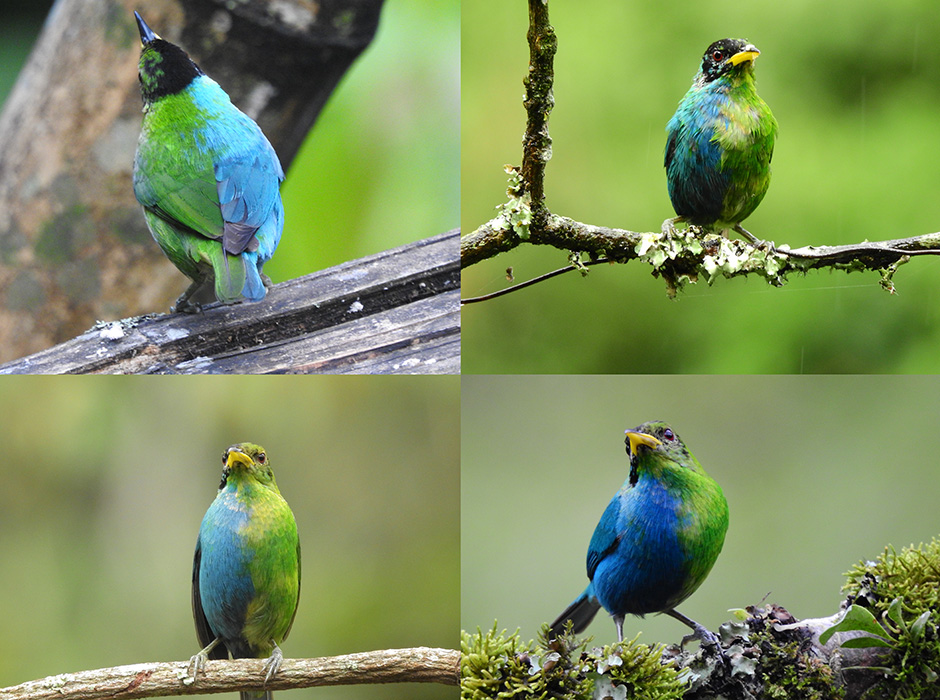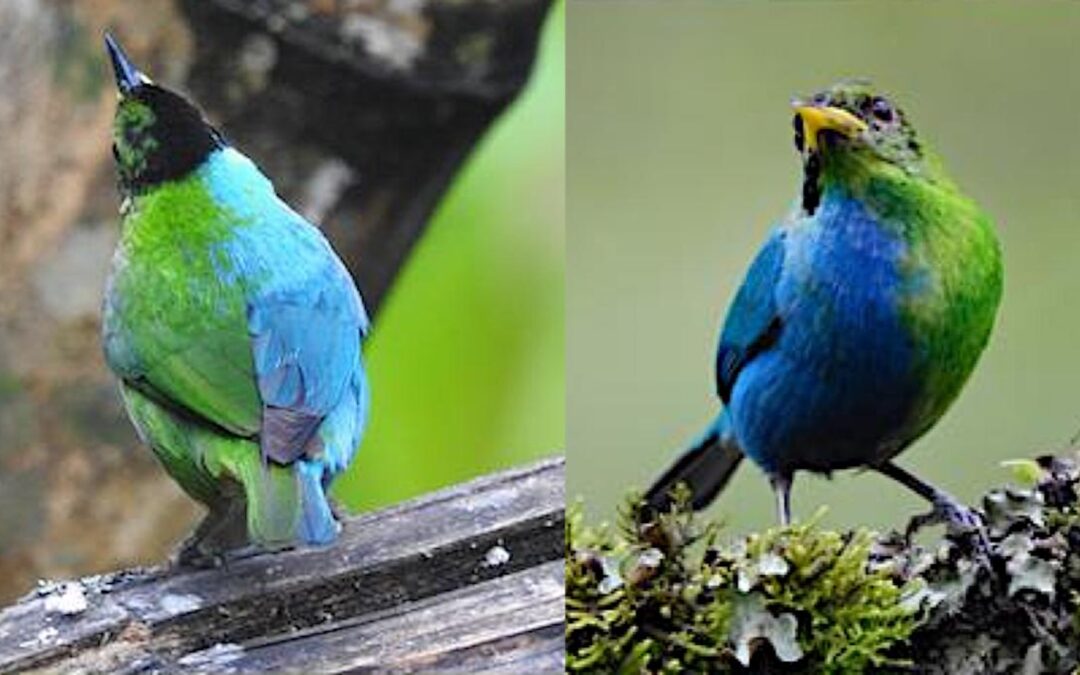The sex of a bird – whether it is male or female – is one of the most critical aspects of its biology. Males and females often behave differently, especially during the breeding season, and in many species, they have strikingly different plumages.
This episode features Hamish Spencer, an evolutionary biologist at the University of Otago in southern New Zealand. Hamish was recently in Colombia, where he was shown a bird that violated these rules.
Colombian ornithologist John Murillo had discovered a very unusual Green Honeycreeper (Chlorophanes spiza) on his farm near Manizales in Colombia and pointed it out to Hamish when he visited early in 2023. The bird exhibited aqua-blue male plumage on its right and grass-green female plumage on its left. The bird’s head showed the black hood of a typical male on the right, but the left side was mostly green.
This episode discusses this bizarre phenomenon, known as bilateral gynandromorphy. How did it affect this particular bird? How does it arise? How common is it? Which species has it been observed in?

The article reporting this find has colour photos taken by John Murillo and is available at https://journal.afonet.org/vol94/iss4/art12/
John Murillo’s video can be seen at https://figshare.com/articles/media/DSCN2268_MOV/23739894
Dr. Hamish Spencer’s Bio and photo

Dr. Hamish Spencer is Sesquecentennial Distinguished Professor in the Department of Zoology at the University of Otago in New Zealand. His research interests and papers can be accessed by clicking this link.
Questions:
- Tell us about your birding trip.
- How does gynandromorphism happen?
- Are there other types of gynandromorphism?
- What were some other highlights of your Columbia trip? What are some of the other species you saw there?
- Can you talk about your interest in the avian species.
- Can you tell us about birding in Otago and if possible other spots in New Zealand?
- Any favourite bird species and why.
Links:
This Bird Is Half Male, Half Female, and Completely Stunning from the New York Times.
A Rare Bird Indeed: A Cardinal That’s Half Male, Half Female from the New York Times.
Split-Sex Animals Are Unusual, Yes, but Not as Rare as You’d Think from the New York Times.
“Extremely rare” half-female, half-male bird captured on film from Earth.com
Photographs by amateur ornithologist, John Murillo who spotted the bird
BIRD OF THE MONTH: GYNANDROMORPHIC BIRDS
Report from the Journal of Field Ornithology written by Dr. Spencer


